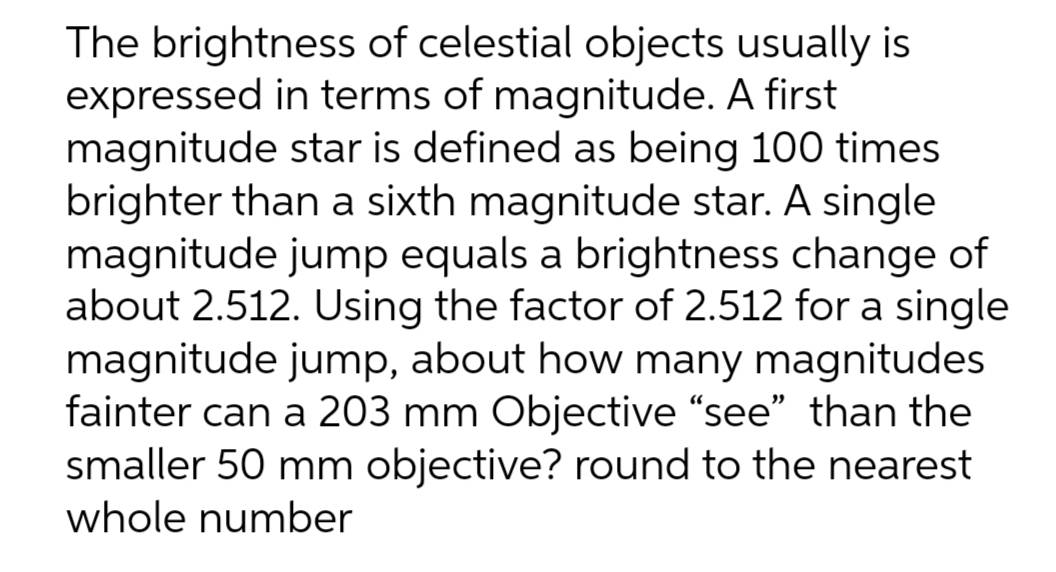The brightness of celestial objects usually is expressed in terms of magnitude. A first magnitude star is defined as being 100 times brighter than a sixth magnitude star. A single magnitude jump equals a brightness change of about 2.512. Using the factor of 2.512 for a single magnitude jump, about how many magnitudes fainter can a 203 mm Objective "see" than the smaller 50 mm objective? round to the nearest whole number
The brightness of celestial objects usually is expressed in terms of magnitude. A first magnitude star is defined as being 100 times brighter than a sixth magnitude star. A single magnitude jump equals a brightness change of about 2.512. Using the factor of 2.512 for a single magnitude jump, about how many magnitudes fainter can a 203 mm Objective "see" than the smaller 50 mm objective? round to the nearest whole number
Related questions
Question
6

Transcribed Image Text:The brightness of celestial objects usually is
expressed in terms of magnitude. A first
magnitude star is defined as being 100 times
brighter than a sixth magnitude star. A single
magnitude jump equals a brightness change of
about 2.512. Using the factor of 2.512 for a single
magnitude jump, about how many magnitudes
fainter can a 203 mm Objective "see" than the
smaller 50 mm objective? round to the nearest
whole number
Expert Solution
This question has been solved!
Explore an expertly crafted, step-by-step solution for a thorough understanding of key concepts.
This is a popular solution!
Trending now
This is a popular solution!
Step by step
Solved in 3 steps
